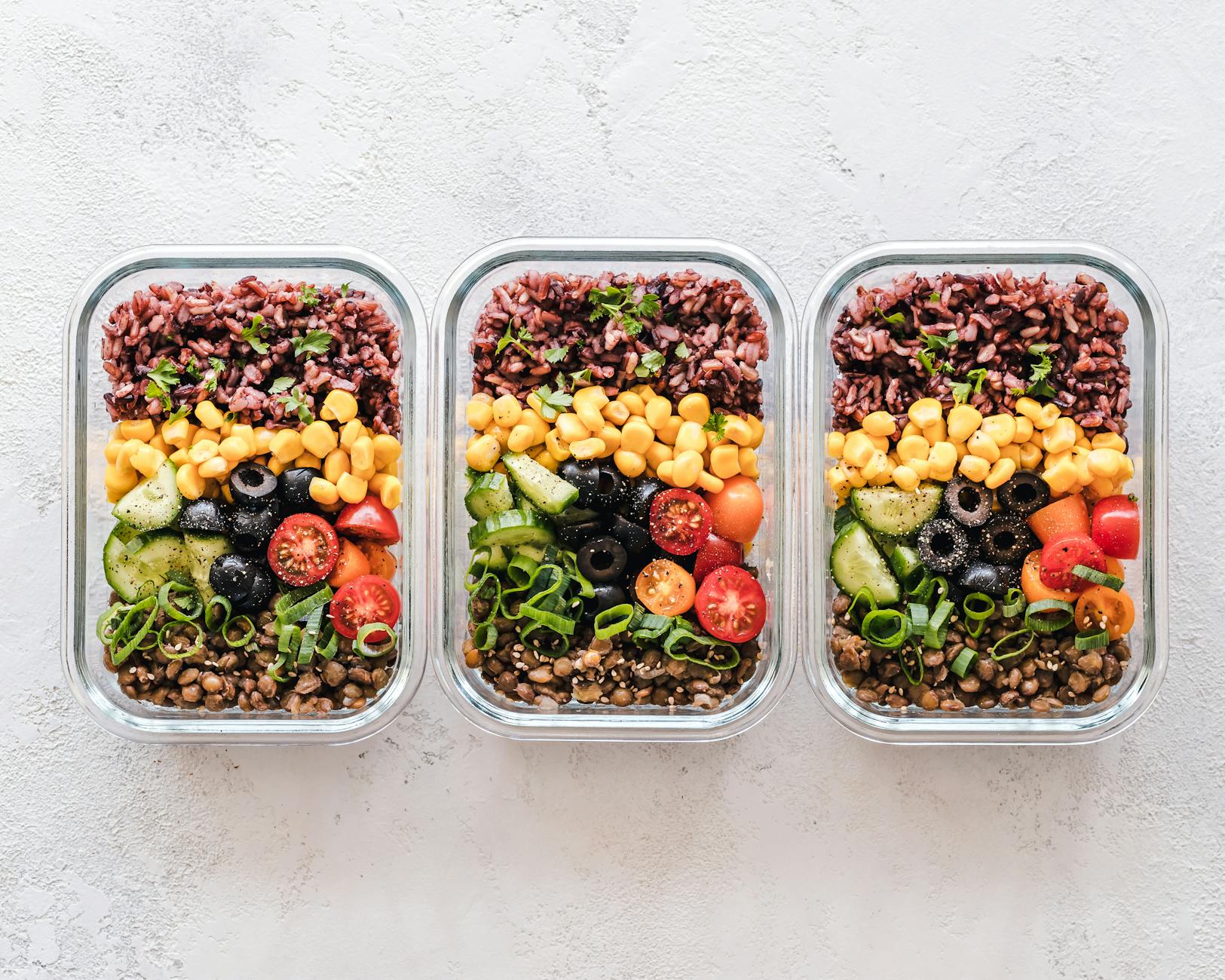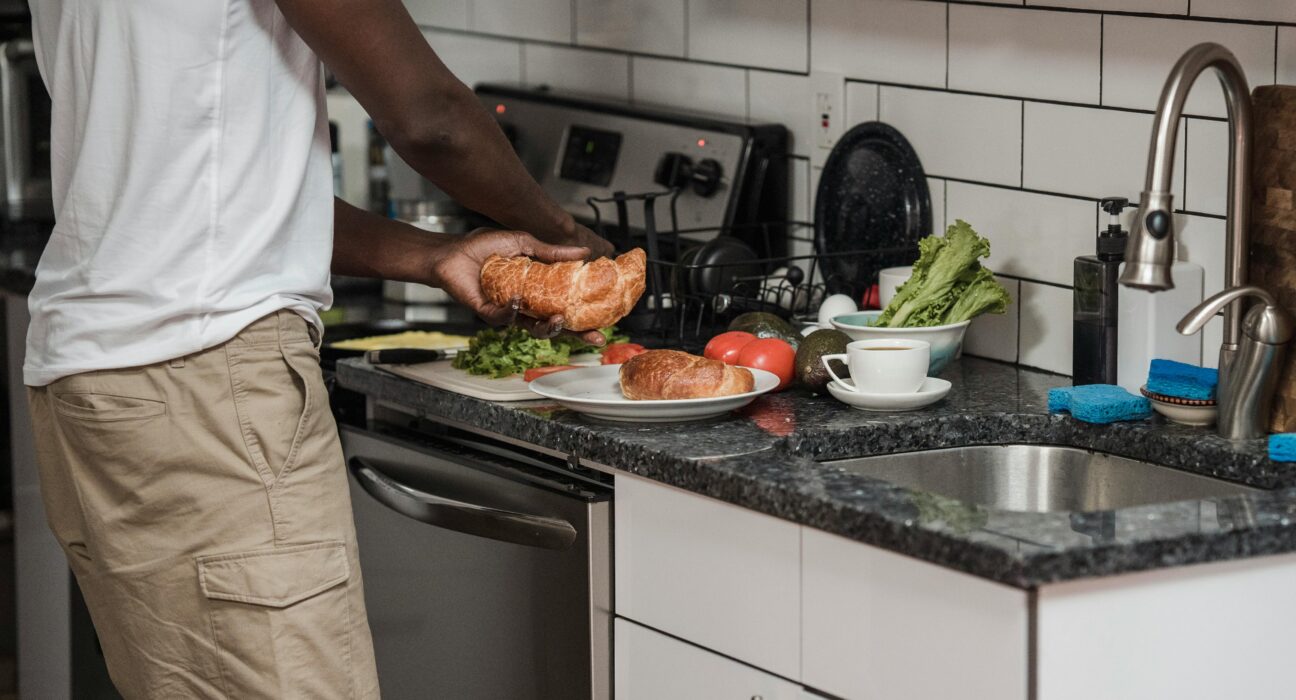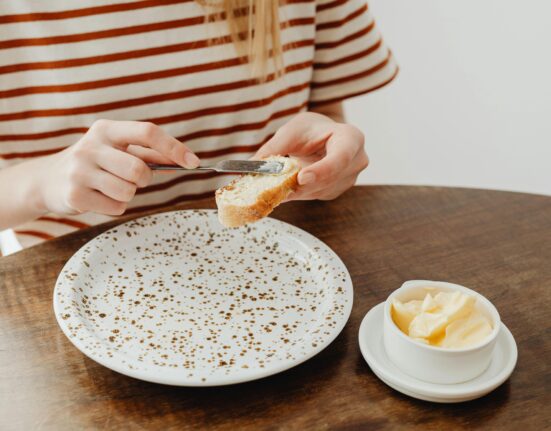Trying to eat healthier and lose weight can feel overwhelming when your schedule is packed. Between work, family, and everything else, finding time to cook balanced meals often takes a backseat. That’s where meal prep comes in. Prepping your meals ahead of time helps you stay on track, saves you hours during the week, and cuts down the stress of figuring out what to eat. With a little planning, you can set yourself up with ready-to-go meals that fit your goals and make life easier.
Benefits of Meal Prepping for Weight Loss
Meal prepping isn’t just a time-saver—it’s a strategy that can make weight loss realistic and attainable. By intentionally planning your meals ahead of time, you put yourself in control of your nutrition, helping to eliminate common pitfalls. Here’s how meal prepping supports weight loss goals.
Time Efficiency and Stress Reduction
One of the biggest perks of meal prepping is how it streamlines your week. When you’re rushing between work, errands, and daily responsibilities, the last thing you want to think about is what to eat. Preparing meals ahead means you don’t have to scramble for something quick or rely on convenience foods that rarely align with weight loss plans.
By dedicating a few hours to meal prep each week, you’re saving time in the long run. Heat-and-eat meals take minutes, so whether it’s a pre-packed salad or some chicken and veggies ready to go, you’re setting yourself up for success. Plus, knowing your meals are taken care of reduces decision fatigue, making it easier to stick to healthful choices. Need more benefits of meal planning? Corewell Health explains how planning ahead paves the way for healthier decisions.
Built-In Portion Control
Overeating can quickly sabotage weight loss efforts, especially when portions get out of hand. Meal prepping naturally helps you manage serving sizes by pre-portioning meals in advance. When everything is measured and packed individually, you’ll know exactly what you’re consuming without having to second guess.
For example, packing meals into reusable containers not only makes them portable but also prevents you from grazing or taking that second (or third) serving. Whether you’re aiming for calorie control or balancing macronutrients, meal prep simplifies the process. It’s like having a built-in accountability partner—your pre-portioned meals do the work for you. Curious how this improves weight loss results? Eating Well shares more about its benefits.
Avoiding Processed and Unhealthy Foods
Let’s be honest: grabbing takeout or packaged snacks is tempting when life gets busy. Unfortunately, these options are often loaded with hidden sugars, unhealthy fats, and excessive calories. Meal prepping helps cut out that temptation entirely by giving you healthier, homemade meals within arm’s reach.
When you plan meals ahead, you’re ensuring you have wholesome ingredients like lean proteins, complex carbs, and fresh veggies on hand. Cooking in bulk offers more control over the ingredients going into your meals, minimizing extra sodium or questionable additives. Plus, when your fridge is stocked with prepped options, turning to fast food or vending machine snacks becomes unnecessary. Want proof? Check out Everyday Health to learn how homemade meal prepping promotes clean eating.
Meal prepping takes the guesswork out of eating right, making weight loss easier to manage. Instead of scrambling for last-minute options, you’ll have balanced meals ready to fuel your day.
Getting Started: Basics of Meal Prep
Starting a meal prep routine can feel overwhelming at first, but once you’ve got the basics down, it’s like riding a bike—you’ll get faster and more confident with practice. Meal prep isn’t about cooking gourmet meals every Sunday; it’s about efficiency and sticking to your health goals. Let’s break it down step by step so you can hit the ground running.
Planning Your Meals and Calories
The first step to successful meal prep is deciding what you’ll eat, and that starts with understanding your nutritional needs. Think of your meals like fuel for your body—what you put in directly impacts how you perform. Whether you’re tracking calories for weight loss or aiming for balanced nutrition, having a clear plan simplifies the process.
- Start by calculating your calorie needs based on factors like your weight, activity level, and goals. Resources like the Mayo Clinic’s meal planning guide can help you figure out a daily target.
- Break your day into meals (e.g., breakfast, lunch, and dinner) and allocate calories for each. For example, if your daily goal is 1,500 calories, you might plan for 400 calories at breakfast, 500 at lunch, and 600 for dinner.
- Prioritize nutrient-dense foods like lean proteins, complex carbohydrates, and healthy fats. This ensures you’re getting the vitamins and energy you need without empty calories.
- Add variety! Eating the same thing every day gets boring fast. Use a rotation of proteins, grains, and veggies to keep things exciting and sustainable. Need inspiration? Check out the Clean-Eating Meal Plan for Beginners for balanced ideas.
Grocery Shopping with a Plan
Walking into the grocery store without a list is like going to a theme park without a map: overwhelming, chaotic, and likely to end with poor choices. A little strategy goes a long way when it comes to shopping for meal prep.
- Write a detailed grocery list: Start with a plan of your weekly meals, then list every ingredient you’ll need. Group them by section (e.g., produce, dairy, pantry staples) to save time in-store.
- Shop your kitchen first: Check your pantry, fridge, and freezer before heading out. This not only saves money but also prevents food waste.
- Stick to the perimeter of the store: Most fresh, whole foods like fruits, veggies, and proteins are found around the edges, while processed options lurk in the center aisles.
- Meal-prep staples: Stock up on versatile ingredients like brown rice, quinoa, chicken breast, frozen veggies, and spices. These items make meal prep flexible and budget-friendly. For more tips, see the Ultimate Guide to Meal Prepping.
Tools You’ll Need for Meal Prepping
Imagine trying to build a house without a hammer or nails—it’s not happening. The right tools make meal prep easier, faster, and way less stressful. Here’s what every beginner needs to get started:
- Meal prep containers: Invest in durable, compartmentalized containers to store prepped meals. Glass options are great because they’re microwave-safe and prevent staining.
- Cutting boards and knives: A quality cutting board and sharp chef’s knife will drastically cut down prep time (pun intended). Proper kitchen tools are lifesavers when slicing veggies or proteins.
- Food scale: Portion control is key for weight loss and accurate meal prep. A food scale lets you measure proteins, grains, and more with precision.
- Other helpful gear: Measuring cups, reusable silicone bags for snacks, and a slow cooker or Instant Pot for bulk-cooking proteins like shredded chicken or chili. For more ideas, browse the 14 Best Meal Prep Tools.

Photo by Ella Olsson
Armed with these tips and tools, you’re now ready to take the first steps in simplifying your meals and sticking to your goals. With a little practice, your meal prep game will feel routine—and your future self will thank you each time you reach for a perfectly packed dish midweek.
Quick and Simple Meal Prep Ideas
When you’re busy, meal prep can feel like your best friend, especially if you’re trying to shed a few pounds. It takes the guesswork out of eating, saves you from reaching for less healthy options, and ensures you’re fueling your body with balanced, nutritious meals. Below are quick and simple meal prep ideas to keep you full and on track with your weight loss journey.
Make-Ahead Breakfasts for Busy Mornings
Breakfast sets the tone for your day, making it key to prep something that’s both filling and packed with energy. If mornings often feel rushed, here are some grab-and-go options:
- Overnight Oats: Layer oats, milk (or a dairy-free alternative), and mix-ins like fresh berries, nuts, and a drizzle of honey in a mason jar. Let it sit in the fridge overnight, and it’s ready to eat the next morning.
- Egg Muffins: Whip up a batch of egg muffins by mixing eggs with your favorite veggies like spinach, peppers, and mushrooms, then bake them in a muffin tin. They’re easy to grab and reheat.
- Smoothie Packs: Portion fruits, leafy greens, and a scoop of protein powder into freezer bags. In the morning, just add your liquid of choice and blend. It’s the ultimate time-saver.
Protein-Packed Lunches
A protein-rich lunch keeps you satisfied and avoids the afternoon slump. Here are some prep-worthy ideas:
- Grilled Chicken Salads: Toss grilled chicken with fresh greens, cherry tomatoes, cucumbers, and a simple vinaigrette. Portion into containers for easy transport. If you need inspiration, check out these budget-friendly meal prep ideas.
- Quinoa Bowls: Combine cooked quinoa with a mix of roasted veggies, chickpeas, and a tangy lemon-tahini dressing for a flavorful, nutrient-packed lunch.
- Turkey Wraps: Roll up sliced turkey, avocado, and a handful of spinach in a whole-grain tortilla. Pair it with fresh fruit or a handful of almonds for a complete meal.
Easy Dinners for Weeknights
After a long day, the last thing you want is to spend hours cooking. Simple prep ensures dinner is both quick and enjoyable:
- Sheet Pan Meals: Toss chicken breast, chopped veggies like zucchini and sweet potatoes, olive oil, and seasoning onto a sheet pan. Roast everything together for minimal fuss and cleanup.
- Stir-Fries: Cook lean protein, such as shrimp or chicken, with a medley of colorful veggies and a light soy sauce-based stir fry. Serve over brown rice or cauliflower rice for extra variety.
- Slow-Cooker Recipes: Toss your ingredients into a slow cooker in the morning, and dinner will be ready by the evening. Options like chicken chili or beef stew make great bulk-prep meals. This list of healthy recipes offers plenty of ideas.

Photo by Sergey Meshkov
Healthy Snacks to Keep You Full
Sometimes the key to staying on track is having the right snacks handy. Here are a few simple options to prep ahead:
- Pre-Portioned Nuts: Divide almonds, walnuts, or pistachios into small containers for an easy grab-and-go snack. They’re loaded with healthy fats and protein.
- Veggie Sticks with Hummus: Cut carrots, celery, and peppers into sticks and pair them with portioned-out hummus containers.
- Yogurt Parfaits: Layer Greek yogurt, granola, and fresh fruit in small jars. They’re perfect for a morning snack or dessert. For a twist, check this ultimate guide to meal prepping.
These ideas are all about making healthy eating more convenient for your busy lifestyle. By prepping in advance, you’ll always have nutritious meals and snacks ready, helping you stay focused on your weight loss goals without sacrificing taste or variety.
Tips to Stick with Meal Prep Long-Term
When it comes to staying on track with meal prep, consistency is key. It’s easy to get excited at first, stock up on containers, and prep for an entire week. But let’s be real—life happens, and the initial momentum can fizzle out. The good news? You can build solid habits to make meal prep work for the long haul. Here’s how to make meal prep a lifestyle, not just a passing effort.
Start Small to Build the Habit
Jumping into meal prep full steam may seem motivating, but it can also lead to burnout. Begin with small, manageable steps instead of prepping every single meal for the week. Focus on one or two meals, like lunches or dinners, and gradually expand once it feels routine.
For example, you might start by prepping three dinners for the workweek. This small win helps you ease into the process while avoiding the overwhelm of spending four hours in the kitchen your first try. Over time, meal prep becomes less daunting and more intuitive, much like any other habit you build through repetition.
Want even simpler ideas to build your meal prep habits? Healthline’s practical meal planning tips can help you get started at a comfortable pace.
Batch Cooking for Variety
Eating the same meal every day can take the joy out of your diet faster than you expect. That’s why batch cooking for variety is a game-changer. With this method, you prepare a few base ingredients, like grilled chicken, roasted veggies, and quinoa, and mix and match them throughout the week.
Consider these ideas for using the same ingredients in different ways:
- Grilled Chicken: Spend one day cooking several chicken breasts. Use them for salads, wraps, or stir-fries later to keep meals from getting repetitive.
- Roasted Vegetables: Pair veggies like broccoli, sweet potatoes, and peppers with different seasonings or sauces during the week for variety.
- Quinoa or Rice: Cook once, then serve with different proteins and sides—think burrito bowls one night and veggie stir-fry another.
Not sure where to start? Check out Rosemary’s guide to staying consistent with meal prep filled with flexible recipe ideas.
Overcoming Common Challenges
Meal prep has its roadblocks, no doubt. Between packed schedules, boredom with meals, and unexpected plans, it’s easy to fall off course. But every challenge comes with a solution if you approach it with the right mindset.
- Lack of Time
Some weeks are hectic, and carving out hours to meal prep just isn’t feasible. Simplify your strategy by blocking shorter sessions—prep for 30 minutes instead of an entire afternoon. Try instant solutions like pre-chopped veggies or a rotisserie chicken from the store to save time. - Getting Bored with Meals
Repetition can kill motivation. Combat boredom by rotating recipes every week or experimenting with spices, dressings, or toppings to liven up familiar dishes. Something as simple as swapping barbecue sauce for teriyaki can transform an otherwise routine meal. Need more variety inspiration? Explore TrainWell’s guide to avoiding meal prep burnout for tips that keep things fresh. - Schedule Changes
Life happens, and sometimes your prepped meals don’t fit the week ahead. Keep a few freezer-friendly meals on hand for emergencies when plans shift unexpectedly. Dishes like soups, casseroles, or frozen burritos can save the day when your schedule gets derailed.
Building long-term meal prep habits isn’t about perfection. It’s about consistency, creativity, and finding what works for your lifestyle. Even if life feels chaotic, the effort you invest today can make tomorrow that much easier.

Photo by Spencer Stone
Healthy Eating on a Budget
When trying to eat healthy and lose weight, budgeting for groceries can feel like a challenge. However, with the right strategies, you can cut costs without compromising on nutrition. Simple shifts in how and where you shop can make healthier eating affordable and sustainable. Here’s how.
Buying in Bulk

Photo by Clem Onojeghuo
Buying in bulk can be a game-changer for anyone looking to save money while eating well. Items like rice, dried beans, oats, and frozen chicken are staples in meal prep—they provide the foundation for balanced, versatile meals. The initial cost may seem higher, but bulk shopping dramatically reduces your price per serving.
Here’s why bulk purchases make sense:
- Dried Beans and Lentils: High in protein and fiber, these plant-based options go a long way in soups, salads, or as a side. They’re cheaper than canned alternatives and store for months.
- Whole Grains: Stock up on brown rice, quinoa, or oats. These complex carbs are budget-friendly and essential for energy.
- Bulk Proteins: Purchase family packs of chicken breasts or thighs. Freeze portions for later to avoid food waste.
- Pantry Basics: Flours, spices, and oils are cheaper per ounce when bought in larger packages and form the basis of almost any dish.
Shopping wisely also means finding the right places to buy. Look for wholesale markets or co-ops like Azure Standard that help shoppers save on bulk, organic products. Stores like Costco or even online retailers often reduce costs for goods that last a long time on your shelves. For more on what foods to prioritize, check out this comprehensive guide on healthy foods to buy in bulk.
When buying in bulk, remember to portion and store items properly. Invest in airtight containers or freezer-safe bags to keep ingredients fresh for weeks or months.
Using Seasonal and Frozen Produce
Fresh produce can get expensive, especially when it’s out of season. However, shifting to seasonal fruits and vegetables—or opting for frozen varieties—can stretch your dollar while keeping your meals nutrient-packed.
Why choose seasonal produce?
- Cost Efficiency: Fruits and vegetables grow in abundance during their natural harvest season, which drives the price down at markets.
- Better Flavor: Seasonal options taste fresher and are more flavorful compared to imported produce that’s often picked prematurely. For example, strawberries in summer or squash in fall offer richer quality.
- Support Local Farmers: Shopping at farmer’s markets for in-season produce benefits not just your wallet but also your local community.
Frozen is just as good—and sometimes better. Flash-frozen produce is harvested at its peak and retains nearly all of its nutrients. Plus, it eliminates the worry of spoilage. Think about your favorite greens for smoothies or veggies for stir-fry—shopping from the frozen aisle can save both time and money. A great resource to learn more is this article on why you should eat more frozen produce.
Here’s how to maximize frozen and seasonal produce:
- Look for frozen spinach, broccoli, peas, and berries for year-round accessibility.
- Purchase fruits in peak season and freeze your own portions for later.
- Avoid frozen options with added sugar, breading, or artificial sauces—choose plain and organic when possible.
Whether it’s fresh, frozen, or seasonal, making produce a priority is easier when you keep an eye out for sales and stock up strategically. Healthy eating doesn’t have to mean breaking the bank—using these methods allows you to allocate your budget smartly so wholesome meals are within reach.
Conclusion
Meal prepping is a simple yet powerful way to take control of your nutrition, save time, and stay focused on weight loss goals. By planning ahead and preparing meals in advance, you eliminate guesswork and make healthier choices easier to stick with.
Start small—prep just a few meals or snacks for the week—and adjust as you go. Experiment with new recipes, flavors, and techniques to keep things exciting. The key is finding a routine that works for you and fits your lifestyle.
Remember, every meal you prepare is a step toward a healthier, more organized life. Why not take that first step today? Your future self will thank you.








